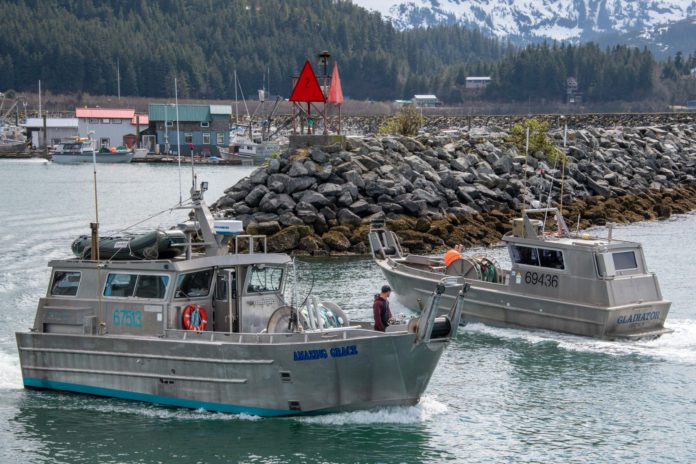
After a valiant commercial start that yielded far below the forecast in sockeyes and Chinooks, the Copper River salmon fishery has been closed pending a boost in the sonar count, leaving harvesters wondering when the next opener will come.
To date the sonar count is the 13th lowest on record (from 1978-2021), Alaska Department of Fish and Game biologists said in an announcement on Tuesday, June 1. The cumulative commercial harvest this year is the fourth lowest harvest to date in the last 50 years, said the ADF&G announcement from Jeremy Botz, finfish area management biologist at Cordova. The cumulative sonar count through May 31 was 54,154 fish, whereas 132,531 fish were projected by this date to meet the in-river run goal, he noted.
The harvest for the three openers to date totaled an estimated 60,127 fish, including 5,259 Chinook, 52,752 sockeye and 2,116 chum.
All this comes as little surprise to veteran fishermen like Bill Webber, now in his 54th year as a commercial harvester.
“The department will have to see a big push of fish past the sonar in order for us to have an opener,” said Webber, who markets his own fish and is also a boat builder in Cordova. “We’re getting to the point where this is becoming a nonviable fishery.”
Why the run of the oil rich Copper River sockeyes and Chinooks has been so troubled in recent years has prompted a lot of speculation. The situation has a lot of fishermen in the Cordova area pondering what possible role Northern Edge military exercises in the Gulf of Alaska, climate change and other fishermen upriver, particularly near spawning grounds, are playing.
“It’s been a cold spring this year, but I’ve seen large returns even in cold springs,” Webber said. “There’s a lot of speculation out there (about Northern Edge), which happens when the young salmon are out-migrating from the river system.”
Webber wonders whether all those munitions that end up in Gulf waters may be impacting the young salmon.
“Who knows if they are contaminating the water and impacting yearling salmon coming out,” he said.
There’s also the matter of other user groups upriver, including subsistence, personal use and sport harvesters.
“It goes without saying they are taking too much,” he said. “Some of them brag about how well they did, how many they threw back. The mortality rates are high on catch and release.”
There are some 127 different stocks of Copper River salmon who spawn in those waters north of Prince William Sound.
“On the sport fishing side, they all say everything is on the up and up, but that’s like the wolf going into the chicken coop and saying, ‘I’m not taking anything’,” he said.
Webber served for many years on the local Department of Fish and Game Advisory Board, the time when the whole department was under one roof.
Then in the 1970s, separate areas were created for commercial and sport fishing, with what Webber said were conflicting mission statements.
“Comfish is to manage for maximum sustained yield and sportfish is to manage for maximum opportunity,” he said. Nowadays “we let all the escapement (of salmon) get to the spawning beds and then we open the doors and let all the wolves in, so to speak.”
Webber said other commercial fishermen share his concerns about accountability and enforcement.
“You can talk to the 542 fishermen down here and hear a common theme,” he said. “It is, after all, human nature if you can take more fish than you are allowed, to take it.
“With the current laws we have, if they could be enforced, we would be in a better position than we are today.”













